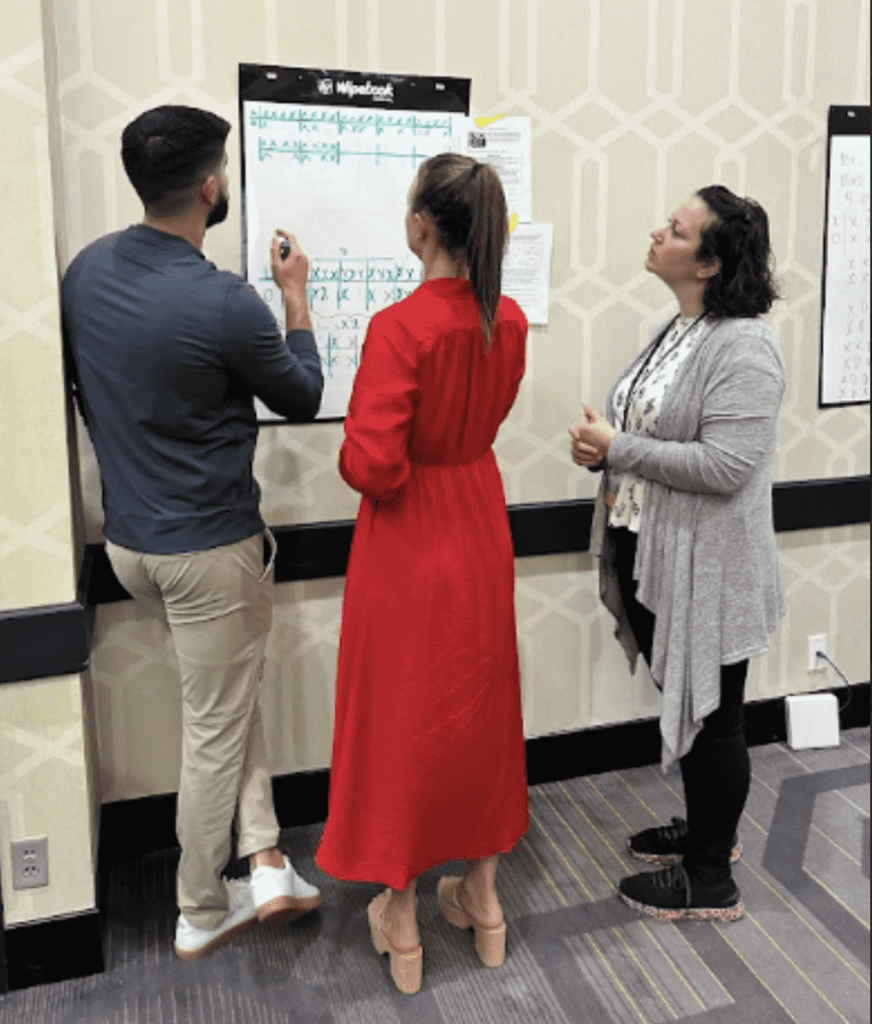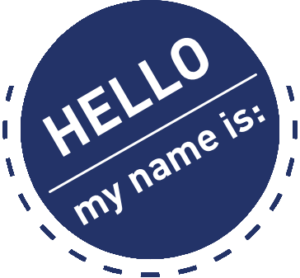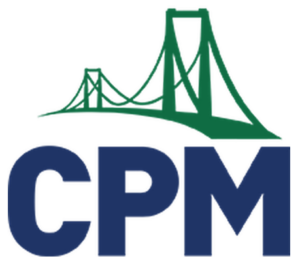May 2024

Want to see a bunch of secondary mathematics teachers having fun? Watch them as they grapple with a newly crafted, powerful mathematical puzzle and playfully uncover layer upon layer of hidden connections and relationships. The excitement of each new surprise is only surpassed by the anticipation of making sense of the next mathematical challenge unveiled. Every Tom’s Problem that we have had the pleasure to work on (more than a dozen for Mark and three for Lara) has been an experience of joy.
What is a Tom’s Problem? (Mark)
As mathematics teachers, we feel fortunate to have the opportunity to share our passion for mathematics with the next generation of problem-solvers. But with the 1,000 + 1 + … classroom tasks that demand attention in the secondary mathematics classroom, precious little time is left for us to experience the joy of problem-solving ourselves. How often do we get to explore complex, novel math problems? Beyond allowing us to experience the joy of problem-solving again, engaging in authentic, collaborative problem-solving with colleagues can also allow us to take a deep dive into our pedagogy. We think it is a gift to experience the same rough draft thinking and productive struggle that we challenge our students with every day because engaging in those activities is what it means to actually do mathematics!
To refresh those feelings of joyful play with mathematics, the late Dr. Tom Sallee (CPM co-founder) offered a tantalizing math problem to all the members of the CPM team at our annual Summer Leadership Institutes. For more than 20 years, Tom would craft an original, complex problem that had the following attributes.
- The problem to be solved was either embedded in an interesting and inviting story (2019, Lighting Candles) or was worked into a generally recognized pattern/puzzle (2014, Strange and Wonderful Magic Squares). Such contexts could be quickly connected to cultural touchstones that were widely shared.
- Whether teaching 6th-grade math or AP Calculus, everyone in the room had plenty to notice and wonder as the initial question or prompt was discussed. Almost immediately, every team would be engaged in an energized, quality conversation, and soon they would realize that any thoughts of an immediate solution could be tabled—Tom had not made this an easy row to hoe!
- Almost like clockwork, a quarter-hour of team consultation would yield another realization about Tom’s Problem; there were multiple pathways forward to explore. By this point, nearly every team in the room had developed an appreciation for the twists, turns, and strategic entanglement encompassed within this math problem.
- The satisfaction of productive struggle would become tangible as “aha” moments fueled teams to growing levels of excitement. These fresh insights not only fostered intellectual thrill but also created newfound connections across mathematical topics. The cycle of challenge and triumph was integral to each step forward, and with each new accomplishment came a new question posed by the facilitator.
- And of course, as with all math tasks, Tom’s Problem would routinely tap into many (if not all) of the eight Standards for Mathematical Practice, as well as the process standards of problem-solving, reasoning and proof, communication, representation, and connections.
Follow this link for a small sampling of Tom’s Problems: Tom’s Problems.
What is it like to experience a Tom’s Problem? (Lara)
After participating in Mark and Ben’s Tom’s Problems session at the 2024 Teacher Conference, I wrote down some reflections to capture my experience. An edited version follows. Throughout this reflection, I’ve “coded” some of my reflections as mathematical insights and pedagogical insights.
As the Tom’s Problem session started, I was feeling excited and so was more social than I usually would be. I asked my tablemates, Rob (he/him) and Sam (they/theirs) why they had chosen this session, and they both said it was to have fun! Me too! They said they had attended the session last year and really enjoyed it, and so were here again. They didn’t already know each other, which made me grateful for the random grouping as it can be hard to integrate into a team of folks who have a history of already working together.
After doing an icebreaker with our teams, Mark pulled us back together for the much-anticipated moment… THE PROBLEM! Mark promised us that we would not finish, and that made me feel grateful because there was no way to be behind.
The problem was about music! I immediately felt a sense of appreciation for the icebreaker activities, which were also about music. Mark introduced the problem by sharing that his grandchildren, Oliver and Levi, were playing two different musical instruments and he had been working with them to figure out how many different sounds they could make. Mark’s son, Ben (a mathematician and Oliver and Levi’s dad), then used a metronome to lead the group through clapping together on each beat, then having half the group clap on both beats and half the group snap on only beat 1. It was physically and/or mentally challenging for me not to snap on every beat! I drew heavily on this experience when doing the task.
Mark then introduced our first task: How many different 2-beat measures are possible when both people have to play the first beat? (a paraphrase). He then moved us to the VNPSs/Wipebooks. My team started by creating a table that ignored the first beat and found an “answer” quickly. When we called Mark over to check our work, he asked us to consider the first beat, so we revised our diagram. This led us to realize that our first measure was redundant with a 1-beat measure, meaning that it sounded just the same as clapping on each tick of the metronome. When Mark saw this, he gave us a new handout that had a version of our table on it.
We then followed a prompt to investigate how many unique (non-redundant) 3-beat measures were possible. I continued to hold the marker for the 3-beat measure investigation.

***
After completing the table for 3-beat measures, we began looking for PATTERNS! At this point, Rob was called up by Mark to participate in a Huddle. He later reflected on how he felt lost when he returned from the Huddle because our pattern-finding conversation had taken off without him. He said he hadn’t considered how going to a Huddle could disadvantage students getting left behind in conversations. This felt like an “aha” moment for me too, because I always think of Huddles as a way to boost a student’s status by giving them information and letting them come back to the group as experts. His experience challenged my thinking, and I apologized for not bringing him into our conversation when he returned!
During our pattern-finding conversation, we made many conjectures and created a table to keep track of patterns we noticed. I also marked up the table as we talked about patterns. I felt eager to find a pattern, but also knew I would have to be patient as we probably didn’t have enough data yet. Sam expressed similar feelings—we needed to get to the 4-beat measure to get more data.
***
Our next task was to investigate how many different 4-beat measures we could create. Even without reading the rest of the prompt, we knew we were headed toward finding something generalizable for n-beat measures.
I had been holding the marker for a while, so I suggested that I hand it off to someone else. Rob agreed and took over responsibility for recording our ideas. Even though I really enjoyed being the one with the marker, I was grateful to have passed it; Rob was much faster and more confident than I in recording different measures, and did so without consulting us. I was humbled by his speed and self-assuredness. For a moment I was surprised at his confidence to move forward so quickly without us, but I tolerated it and then quickly moved into gratefulness. I began to feel like this was grunt work rather than the actual mathematics at this point, and that Rob was doing us a favor. With the 2- and 3-beat measures, recording the different measures did feel like part of the mathematical work. I think by the time the 4-beat measures came along, we were all ready to get to finding the pattern.
As Rob continued writing different 4-beat measures, Sam and I began discussing how many redundant measures the 4-beat measure would have. They had some experience with music and so were better able to interpret the task than I was. At some point, they were called up by Mark using their team role and they returned telling us that we could spy on another team’s work. I was having fun and didn’t want to break to spy, but they brought it up several times and eventually said that while we continued what we were doing, they would quickly spy on other teams.
I asked Rob to draw a dotted line down the middle of the 4-beat measure—in the midline of the 4 gridline squares of the VNPS. This made it almost trivially easy for us to identify the measures that were redundant with the 2-beat measures.
We only got to the place where we could identify one 4-beat measure that would be redundant with a 2-beat measure before Mark called us back to our tables. I continued thinking as Mark was talking because I was consumed with my conjecture. I saw Sam nodding along and realized they had probably made more connections or conjectures than I had. But my thoughts were still swirling! As I sat quietly, I made some progress assuring myself my conjecture was true. That felt better!
Feeling like I was on to something, I approached Ben after the session to share my ideas. I wanted to know if I had the right “answer” (Was this even an “answer” to the questions that were posed on the handout? I didn’t and still don’t know!), but I think I just shared my idea. He simply said, “That seems like a reasonable conjecture,” and smiled. So, I didn’t get a pat on the back, but encouragement to continue exploring.
Which is precisely what I did that night and several nights later!
Final words: I find the spiral between what is and what isn’t the math to be entertaining; I find humor and pleasure in it. It is fun to be able to return to previously unimportant ideas or processes to find out just how important they are. But, how could we have known that without continuing our journey? Perhaps other teams realized it before we did, but I think there was so much interesting mathematics happening in this problem that there are probably lots of interesting ideas to latch on to and paths to pursue. I probably would have learned more about that if I had been better able to focus on the whole group discussion and stop thinking about my conjecture! I don’t know that I’ll continue trying to solve this problem, but I don’t know that I won’t either. I do know that I can’t get it out of my head!
What do teachers say about participating in a Tom’s Problem session? (Mark)
As you might imagine, inviting secondary mathematics teachers to a problem-solving party is like gathering a gaze of raccoons for a grape-eating event—no one can get enough and they won’t stop until finished! Common words and phrases that participants used in their feedback form to describe the activity included the following: “fun,” “enjoyable,” “engaging,” “good conversations,” “collaborative,” and “challenging.” When teachers were asked to share highlights of the learning experience, they provided the following:
- Loved that we did a problem that we did not solve!
- Involving music and math together made the problem even more accessible for everyone.
- I loved being challenged and working with others.
- Always love the productive struggle to keep our minds sharp and learning.
- Great to act as a student with a challenging problem.
- My group was awesome.
- I love this problem! It is really interesting and I am definitely going to continue working on it! And send it to my Dad!
- I think Tom would be proud.
The number one wish reported was for more time. This bit of feedback is consistent with the desires expressed by teachers during more than two decades of Tom’s Problem sessions. Once engaged, there’s no turning back; problem-solving becomes a sacrosanct event, and asking teachers to stop usually triggers a mild uproar.
Every Tom’s Problem session is a catalyst for original thinking. Participants offer fresh ideas and interpretations about the core mathematical concepts involved. New connections that were not anticipated by the authors often emerge. Also, helpful suggestions regarding teacher moves (as with “more check-ins early on”) are welcome and have a positive effect on the next presentation of the problem.
What does this mean for you?
Fortunately for us, Tom Sallee found a way to support teachers as they walk the walk of learning new mathematics throughout their careers. As he facilitated these sessions, he observed hundreds of mathematics teachers exhibiting quite similar positivity when solving a seemingly insurmountable problem. He knew that most mathematics teachers share a passion for exploring the unknown, taking on a challenge, and seeking mathematical insight. Tom witnessed the joy shared by colleagues as they frolicked in his mathematical playground, enjoying a recess from the day-to-day demands of the secondary mathematics classroom.
We have linked several Tom’s Problems, and we hope that you might take some time with your colleagues or friends to playfully explore them. We know you are busy, and we hope this feels like taking some time for some self-care rather than adding to your to-do list. If you need a little extra motivation, we think this kind of mathematical play both constitutes self-care and feeds your professional practice: we both agree that teachers’ sense of intellectual thriving is intimately tied to students’ enjoyment of mathematics.

Mark Coté & Lara Jasien
markcote@cpm.org
larajasien@cpm.org

